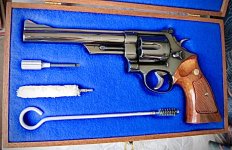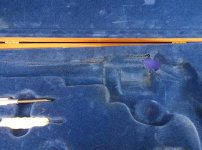I have a super nice wood presentation case, the interior flocking is 99% good.
The problem is the lower part that holds the gun is molded plastic and has split/cracked in the area of where the rear sight would be.
So, how to repair the plastic and if repaired, I guess the whole thing would need to be reflocked to match which seems like a waste. My Wife and I can do the flocking, that's not an issue. Just strong tape and apply adhesive over it??
Can flocking be applied over existing flock after a barrier coat of latex pint is applied??
I don't want to get involved and make it worse!
When the gun is in the case the split is not visible, so is it even worth fixing?
Thanks
The problem is the lower part that holds the gun is molded plastic and has split/cracked in the area of where the rear sight would be.
So, how to repair the plastic and if repaired, I guess the whole thing would need to be reflocked to match which seems like a waste. My Wife and I can do the flocking, that's not an issue. Just strong tape and apply adhesive over it??
Can flocking be applied over existing flock after a barrier coat of latex pint is applied??
I don't want to get involved and make it worse!
When the gun is in the case the split is not visible, so is it even worth fixing?
Thanks


